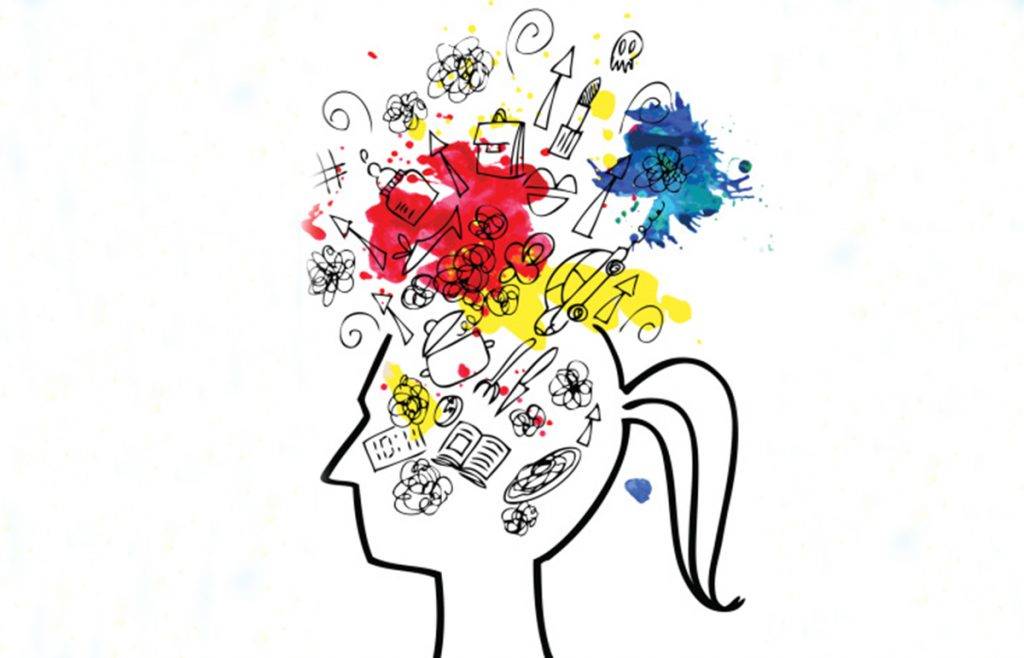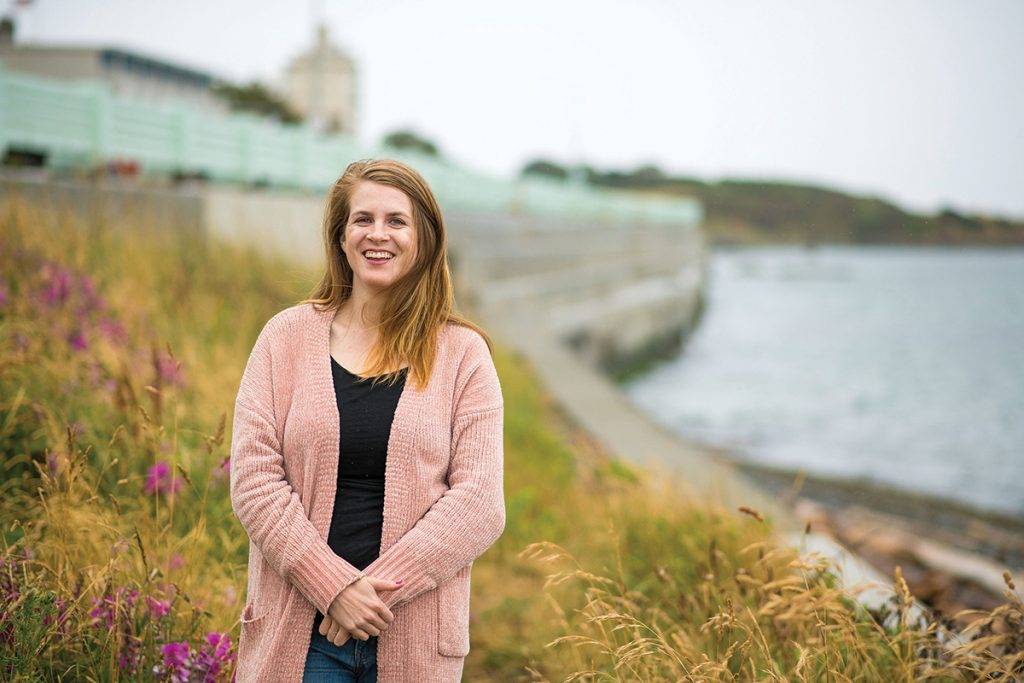Anxiety may be a household word, but that doesn’t mean it’s easy to deal with. YAM writer Susan Hollis talks to some anxiety experts on how the condition reflects the complex inner landscape of humans in a post-industrialized world.
By Susan Hollis

Anxiety. For better or for worse, it’s a word now common to our lexicon — and it’s plump with an almost universal understanding. But unlike other modern buzzwords, like mixologist or influencer, in today’s existential society the prevalence of anxiety reflects the complex inner landscape of humans in a post-industrialized world.
Children are anxious, as are seniors, millennials and everyone in between. It’s as though we’ve created a culture in which we give ourselves very little permission to fail and a million ways to do so, resulting in the crushing fears and worries that result in this common disorder.
For Australian author Sarah Wilson, who openly writes about anxiety along with her other diagnosed disorders — including being bipolar, obsessive-compulsive and having insomnia — navigating mental wellness has become a lifelong exercise, and it’s one without a perfect solution. Nonetheless, her message to fellow sufferers is a positive one.
In her newest book, First We Make the Beast Beautiful: A New Journey Through Anxiety, Wilson speaks to the never-ending striving for mental and physical wellness as simply being a part of her life, regardless of a cure. She has no delusions that any of the techniques she uses will be a magical fix, instead choosing to focus on what methods work to keep her on the right path.
“I bump along, in fits and starts, on a perpetual path to finding better ways for me and my mate, Anxiety, to get around,” she writes early in the book. “It’s everything I do.”
Worry in Overdrive
In evolutionary terms, anxiety is a useful tool: a built-in red flag to alert us to the possibilities of imminent danger. The omnipresent sense of worry that consumes people’s lives, however, is a different bag.
There is a fine line between normal worries that propel us towards safety and success — such as double-checking a child’s seat belt or doing extra review for an upcoming exam or presentation — and the abnormal.
Sleepless nights worrying about the possibility of a car accident or needing therapy to face a social scenario — this is where anxiety stops being a healthy part of daily life. This is also where anxiety can snowball as lack of sleep and self-defeating inner dialogue create the perfect environment for these feelings to fester.
“The difference between worry and anxiety is when it starts to limit your world and your daily activities,” says Jen Vining, a registered clinical counsellor in Victoria, pointing out that anxiety can start as early as babyhood with separation anxiety.
“I don’t like to generalize, but a way to look at it is this: A lot of people struggle with flying now, but they get on the plane. Somebody with anxiety has done a lot of work to get on that plane — they’ve probably taken an Ativan, done some therapy — that’s the difference.
“A worrier will have thought about it ahead of time, but it didn’t make them think twice about booking that ticket. The person with anxiety would have thought twice about booking that ticket.”
There has been much written on anxiety since it started being more commonly named by therapists, physicians and pharmaceutical companies in the early 80s, but it has been around for as long as we’ve existed. Called hysteria by the ancient Greeks, it was typically labelled a women’s condition.
Same goes for the Renaissance era, when many anxious or so-called “hysterical” women were labelled as witches and persecuted for their unnatural feelings. Likewise, in Victorian times, women were regularly carted off for electro-convulsive therapy for voicing feelings and consuming worries that fell outside the range of polite conversation.
Statistics around anxiety are complicated because not all sufferers seek treatment. According to the Anxiety and Depression Association of America, anxiety disorders are highly treatable, yet only 36.9 per cent of those suffering receive help.
Google statistics show that internet searches for anxiety are up 150 per cent in the past eight years, and Wilson points out that in the latest (fifth) edition of the Diagnostic and Statistical Manual of Mental Disorders (DSM), 37 different disorders are listed under anxiety.
These include social phobia, panic disorder, generalized anxiety disorder (pervasive and chronic worry about a variety of everyday issues), separation anxiety, obsessive-compulsive disorder (OCD) and post-traumatic stress disorder (PTSD).
To complicate matters and further hinder treatment, around half of those who suffer from anxiety also experience depression.
A Perfect Storm
“I don’t think these times are any more anxious than say, the middle of World War II,”says Wilson, “but what’s happened is we are lacking a resilience to be able to sit with anxiety, and it has a lot to do with the fact that we like quick fixes. We are used to self-help books and the internet, and I think that’s leading towards a perfect storm of circumstances for anxiety to grow.
“I think that the times have shifted …. the way we are living today, we are almost emulating the anxious experience, the fight or flight response in our brains, on a daily basis,” she adds.
“On top of that, the science has shifted,” Wilson says. “We used to think anxiety was a serotonin imbalance in the brain, but as it turns out, none of that science was accurate and, as a matter of fact, it was paid for by the pharmaceutical companies … Now we understand, it stems from all sorts of things like lifestyle factors, not just a chemical imbalance of the brain.”
Wilson notes that different cultures deal with anxieties in unique ways. On a recent trip to Japan, she observed that anxieties play out as overwork, which can cause anxiety, as well as be an avoidance technique.
A 2018 Yahoo Canada poll of 1,500 people by Abacus Data showed that nearly half of Canadians struggle with anxiety, and numbers compiled by the World Health Organization (WHO) show that, globally, one in 13 people suffer from anxiety, making anxiety disorders the most common mental disorders worldwide — with specific phobia, major depressive disorder and social phobia being the most common anxiety disorders.
Giving Up Control
Victoria resident and writer Emily-Rose Kilpatrick says she first started experiencing anxiety when she was six years old. Now 28, she has a full quiver when it comes to techniques for handling anxiety, as well as the obsessive-compulsive disorder that accompanies it. Like Wilson, she faces her situation with the understanding that managing it well is better for her than expecting a full recovery.

“General anxiety is tied to that feeling of a lack of control, and also that if you think of the worse case scenario, it won’t happen because you’ve thought of it, you’ve covered it. It’s what they call magical thinking,” says Kilpatrick.
“How I deal with it is … learning that I can’t do anything about it — the idea that by giving up control, you gain control — so therapy has been extremely helpful with that. I will sing the praises of therapy to anyone who will listen.”
As part of her regular routine, Kilpatrick uses therapy, meditation (even when done badly, she says it’s still beneficial), yoga, exercise and journaling to keep balanced and healthy.
“Writing is such a salvation,” she says. “It’s kind of like lancing a boil. Not to be gross about it, but there’s something about the pressure release of channeling it from your brain to your fingers, and out onto the page.”
Kilpatrick also practices cognitive behavioural therapy (CBT), a drug-free form of symptom management commonly recommended by therapists that provides techniques that identify and change the unhelpful patterns of thinking that feed anxious thoughts.
It’s often the first treatment to try for mild or moderate problems with anxiety. Though she was already familiar with using CBT for anxiety, Kilpatrick recently finished an eight-week CBT course through the General Practice Services Committee in Victoria, which she called a great refresher.
Victoria counsellor Jen Vining recommends mindfulness techniques, such as the one she refers to as the “five senses,” where someone experiencing high anxiety refocuses to name five things they can see, four things they can feel, three things they can hear, two things they can smell and one thing they can taste.
She also regularly uses Jacobson’s Relaxation Technique, a method that focuses on tightening and relaxing specific muscle groups in sequence, which is beneficial to those who have a hard time gathering their thoughts.
“Anxious-minded people are very busy in their heads,” she says. “Their brains are busy and always going, and meditation for somebody who is really busy in their head can be really difficult because it’s hard for them to shut their minds down.”
As people with an anxiety disorder are three to five times more likely to go to the doctor, and six times more likely to be hospitalized for psychiatric disorders than those who do not suffer from anxiety disorders, having a supportive team who understands the condition and its effects is one of the first lines of defence on the road to improved mental wellness.
Kilpatrick says her family has been in the know since she first began to feel anxiety at the age of six. She’s found that speaking openly of her struggles has more of a unifying effect than anything else.
“Having support is so huge,” she says. “It’s a cliché, but people think it’s weak to ask for help when it’s actually the strongest thing you can do.”
This article is from the September/October 2019 issue of YAM.
